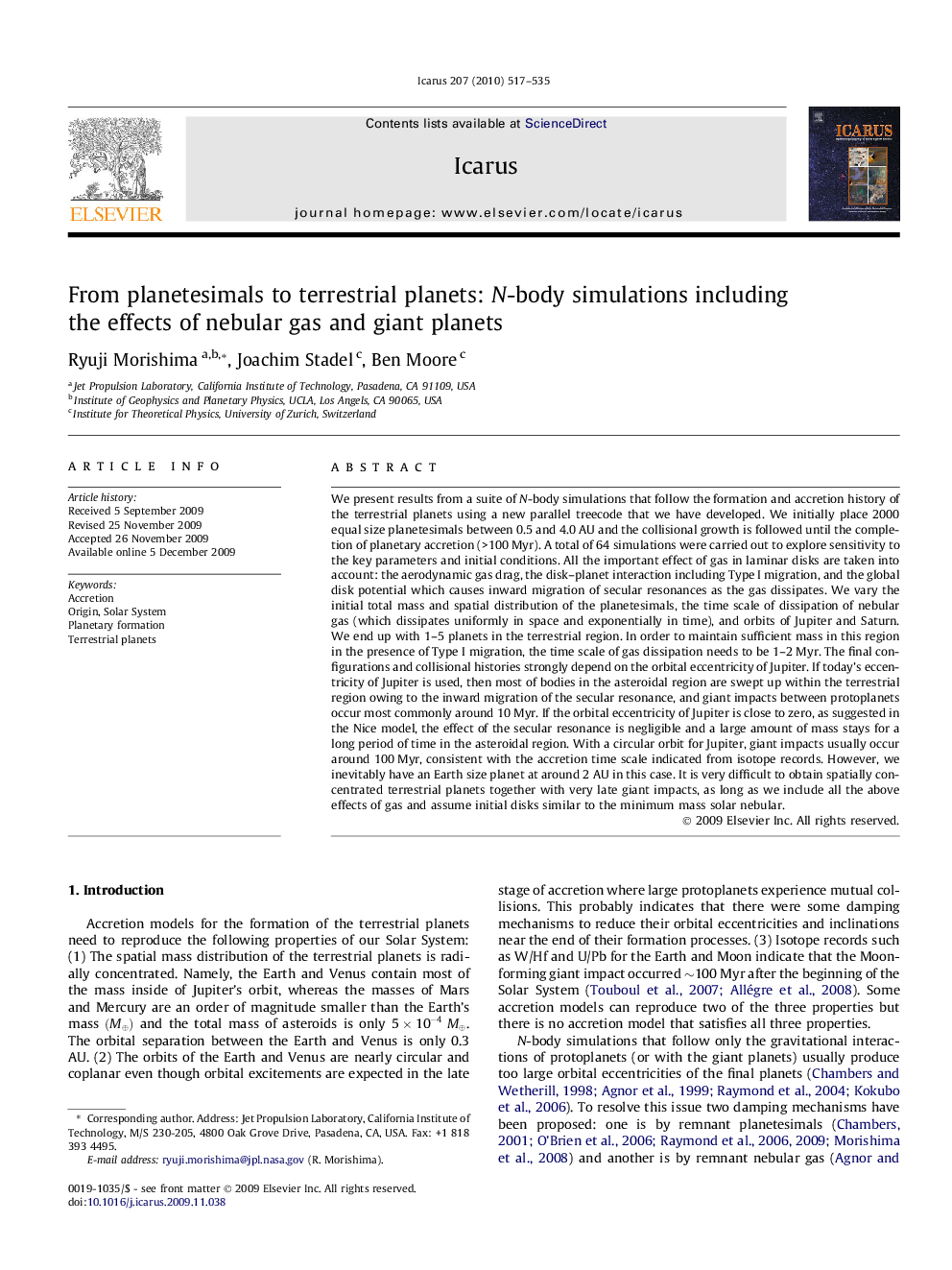| کد مقاله | کد نشریه | سال انتشار | مقاله انگلیسی | نسخه تمام متن |
|---|---|---|---|---|
| 1774260 | 1021160 | 2010 | 19 صفحه PDF | دانلود رایگان |
عنوان انگلیسی مقاله ISI
From planetesimals to terrestrial planets: N-body simulations including the effects of nebular gas and giant planets
دانلود مقاله + سفارش ترجمه
دانلود مقاله ISI انگلیسی
رایگان برای ایرانیان
کلمات کلیدی
موضوعات مرتبط
مهندسی و علوم پایه
علوم زمین و سیارات
علوم فضا و نجوم
پیش نمایش صفحه اول مقاله

چکیده انگلیسی
We present results from a suite of N-body simulations that follow the formation and accretion history of the terrestrial planets using a new parallel treecode that we have developed. We initially place 2000 equal size planetesimals between 0.5 and 4.0 AU and the collisional growth is followed until the completion of planetary accretion (>100Â Myr). A total of 64 simulations were carried out to explore sensitivity to the key parameters and initial conditions. All the important effect of gas in laminar disks are taken into account: the aerodynamic gas drag, the disk-planet interaction including Type I migration, and the global disk potential which causes inward migration of secular resonances as the gas dissipates. We vary the initial total mass and spatial distribution of the planetesimals, the time scale of dissipation of nebular gas (which dissipates uniformly in space and exponentially in time), and orbits of Jupiter and Saturn. We end up with 1-5 planets in the terrestrial region. In order to maintain sufficient mass in this region in the presence of Type I migration, the time scale of gas dissipation needs to be 1-2Â Myr. The final configurations and collisional histories strongly depend on the orbital eccentricity of Jupiter. If today's eccentricity of Jupiter is used, then most of bodies in the asteroidal region are swept up within the terrestrial region owing to the inward migration of the secular resonance, and giant impacts between protoplanets occur most commonly around 10Â Myr. If the orbital eccentricity of Jupiter is close to zero, as suggested in the Nice model, the effect of the secular resonance is negligible and a large amount of mass stays for a long period of time in the asteroidal region. With a circular orbit for Jupiter, giant impacts usually occur around 100Â Myr, consistent with the accretion time scale indicated from isotope records. However, we inevitably have an Earth size planet at around 2 AU in this case. It is very difficult to obtain spatially concentrated terrestrial planets together with very late giant impacts, as long as we include all the above effects of gas and assume initial disks similar to the minimum mass solar nebular.
ناشر
Database: Elsevier - ScienceDirect (ساینس دایرکت)
Journal: Icarus - Volume 207, Issue 2, June 2010, Pages 517-535
Journal: Icarus - Volume 207, Issue 2, June 2010, Pages 517-535
نویسندگان
Ryuji Morishima, Joachim Stadel, Ben Moore,